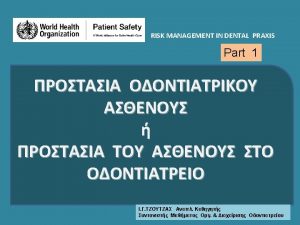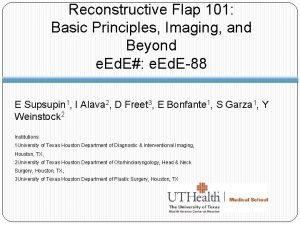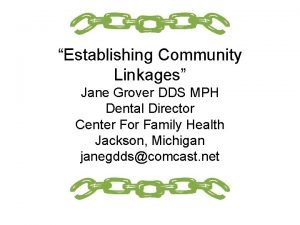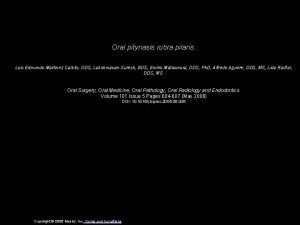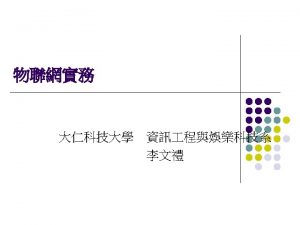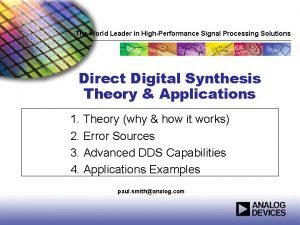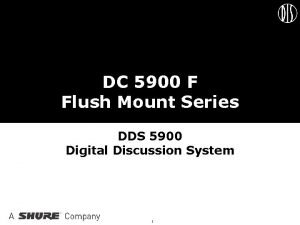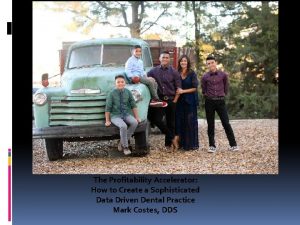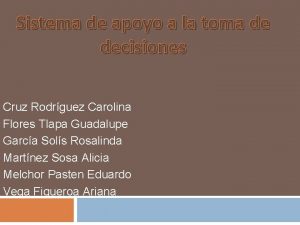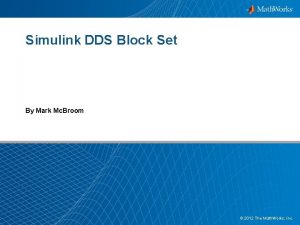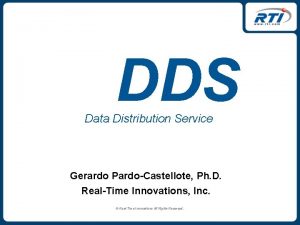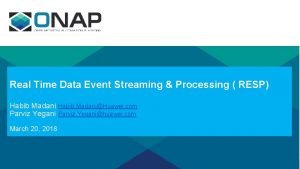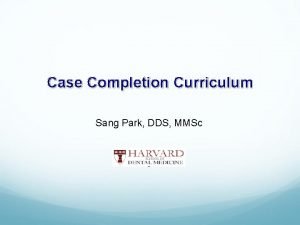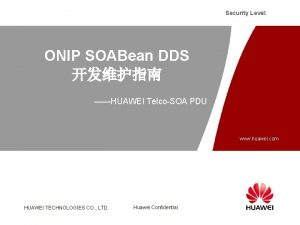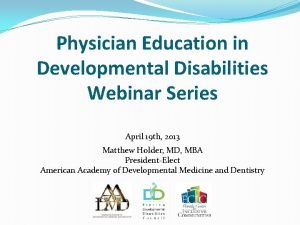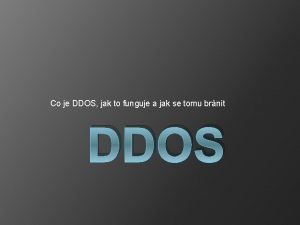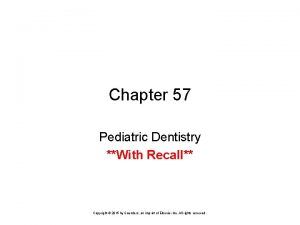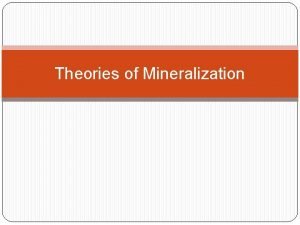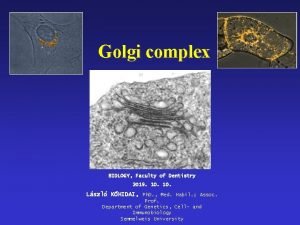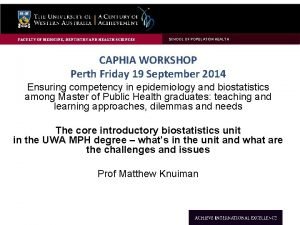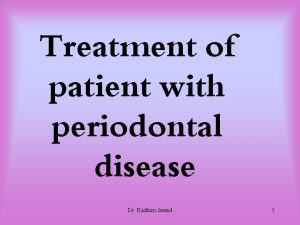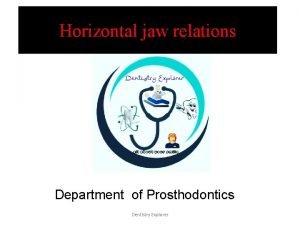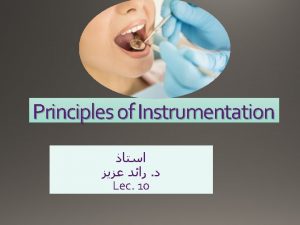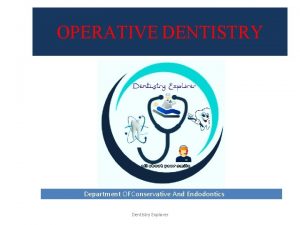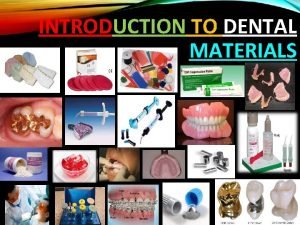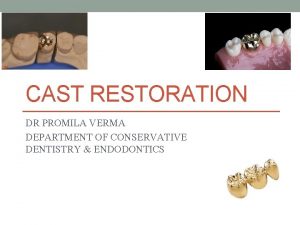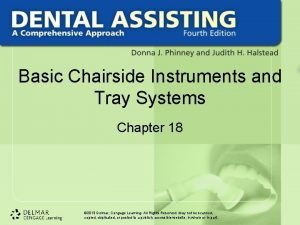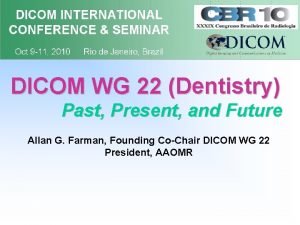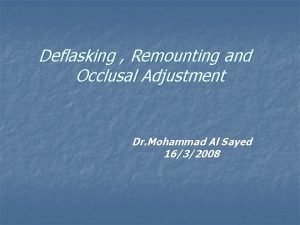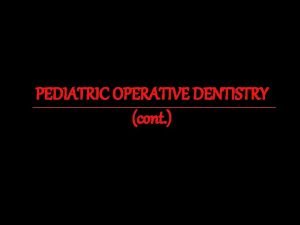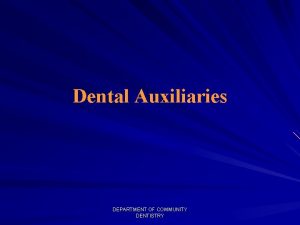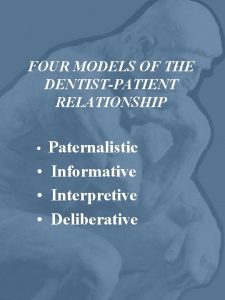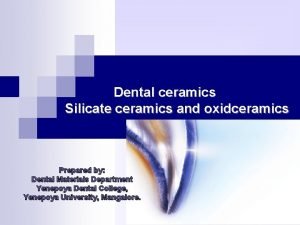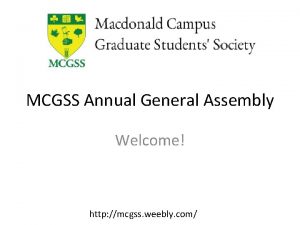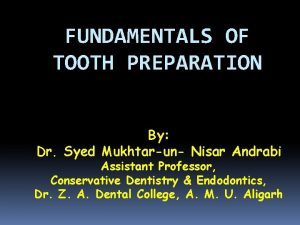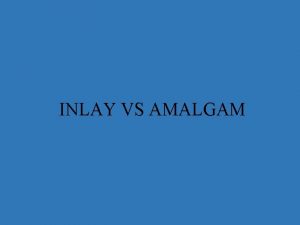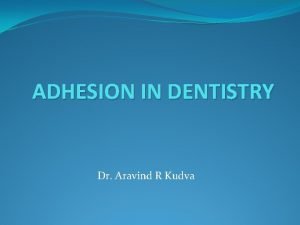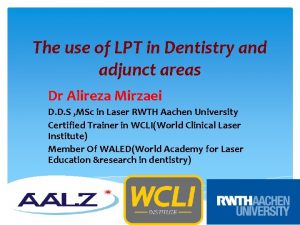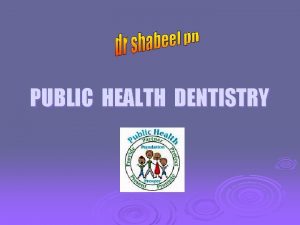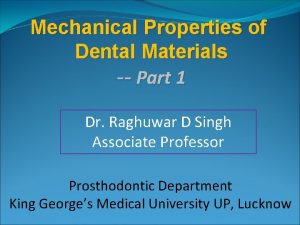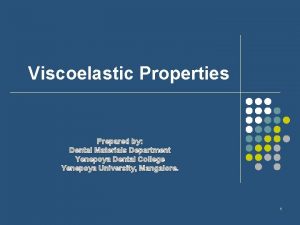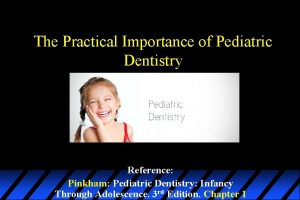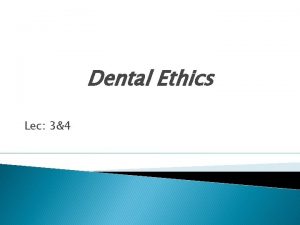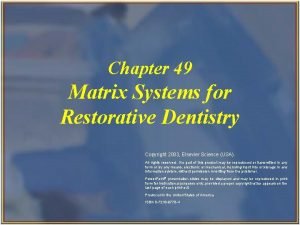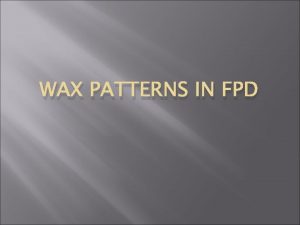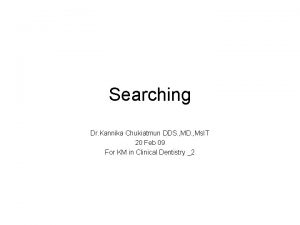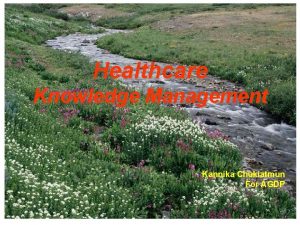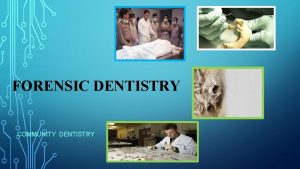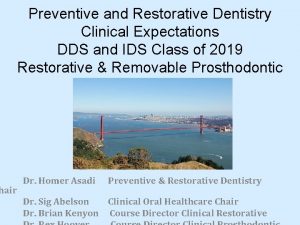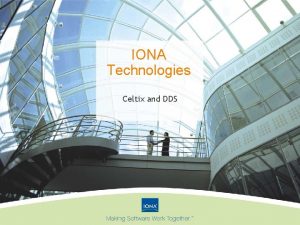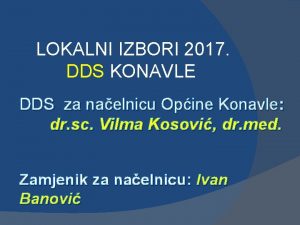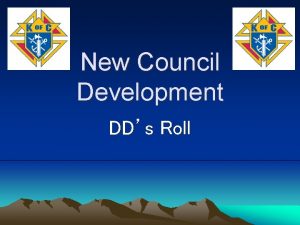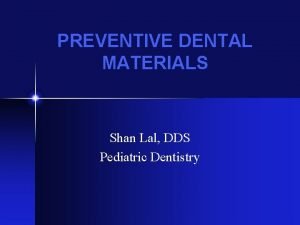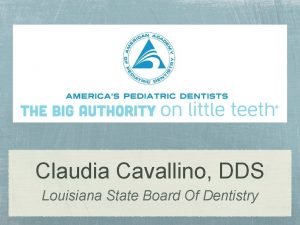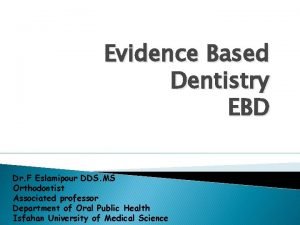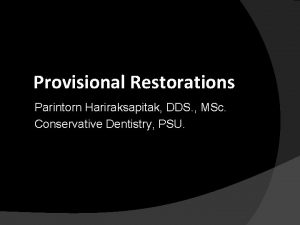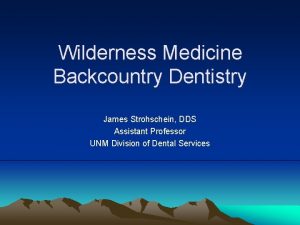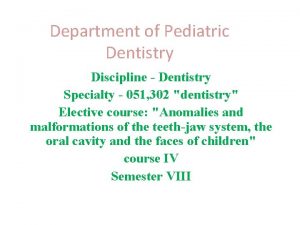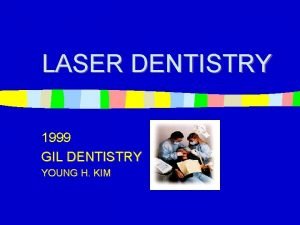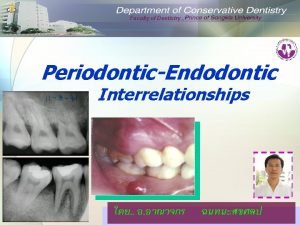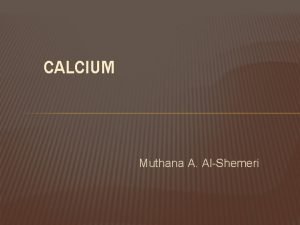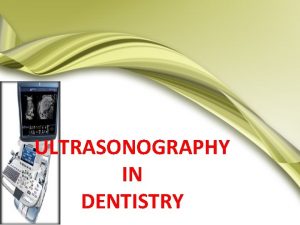KM in Clinical Dentistry Dr Kannika Chukiatmun DDS



























































- Slides: 59

KM in Clinical Dentistry Dr. Kannika Chukiatmun DDS. , MD. , Ms. IT At Thammasart U. 23 Jan 08

Explicit knowledge VS Tacit knowledge n n n Documented Codified Archived ¨ ¨ ¨ Customer list Patent Trademark Business plan Marketing research n n Not documented Difficult to identify ¨ ¨ ¨ Know how Experience Personal talent Intuitive Innovative

Evolution of KM n Wave 1 IT dominated approach ¨ Misleading dichotomy of tacit/explicit ? ¨ n Wave 2 Importance of relationships, connections ¨ Recognized rise of social capital ¨ Decline of CKO ? ¨ n Wave 3 COP ¨ Focus on how people make decision ¨ Alignment with business imperative, quality management, risk management etc. ¨



Knowledge Society I “Knowledge Explosion” n n Productivity Competitiveness Market mechanism Survival of the fittest

Knowledge Society II “Knowledge Management” n n n Harmony Learning Organization Community of Practice Knowledge Broker Knowledge Master : Content Management (Informaticist Model)

Excellent Center n Performance Excellence ¨ Organization ¨ Competency ¨ Learning ¨ Knowledge ¨ Blended-Learning n Technology

Choosing Your Knowledge Management Strategy n KM has been applied to a very broad spectrum of activities designed to manage, exchange and create or enhance intellectual assets within an organization, and that there is no widespread agreement on what KM actually is. Knox Haggie, John Kingston (2003)

Choosing Your Knowledge Management Strategy n IT application that are termed “KM applications” range from the development of highly codified help desk systems to the provision of video conferencing to facilitate the exchange of ideas between people. n One fact that does seem to be agreed on is that different situations require different knowledge management strategies.

KM Strategies n Classification By Knowledge Nonaka & Takeuchi’s Matrix of Knowledge Types ¨ Boisot’s I-Space Model ¨ “The process of growing and developing knowledge assets within organizations is always changing. ” n Classification By Business Process APQC International Benchmarking Clearing house Study ¨ Mckinsey & Company ¨

KM Strategies n Classification By End Results Treacy & Wiersema’s Value Disciplines ¨ Zack’s Knowledge Strategy ¨ n A Synthesised Approach ¨ Binney’s KM Spectrum (2001)

KM Strategies n Derek Binney (Binney, 2001) provides a framework, The KM Spectrum, to help organisations make sense of the large diversity of material appearing under the heading of KM, and to help them assess where they are in KM terms. His focus is on the KM activities that are being carried out, grouped into six categories: ¨ ¨ ¨ Transactional KM: Knowledge is embedded in technology. Analytical KM: Knowledge is derived from external data sources, typically focussing on customer-related information. Asset Management KM: Explicit management of knowledge assets (often created as a by-product of the business) which can be reused in different ways. Process-based KM: The codification and improvement of business practice and the sharing of these improved processes within the organisation. Developmental KM: Building up the capabilities of the organisation's knowledge workers through training and staff development. Innovation/creation KM: Fostering an environment which promotes the creation of new knowledge, for example through R & D and through forming teams of people from different disciplines.





Examples of technologies that can support or enhance the transformation of knowledge : IBM Journal“ Knowledge management technology” by A. D. Marwick n n Tacit to Explicit E-meetings Synchronous collaboration (chat) Answering questions Annotation Explicit to Tacit Visualization Browsable AV of presentations Explicit to Explicit Text search Document categorization

KMS workout n Knowledge Engineering Approach to KM ¨ n n Mapping Common. KADS task type to The KM spectrum Selecting KM Strategies Link the value disciplines with the Strategies Customer intimacy (CRM, Data mining, Business Intelligence) ¨ Operational excellence (Best Practice Transfer, TQM, BPR, Process Improvement) ¨ Product Leadership (choose KM strategies supporting Communities, Collaboration, Discussion Forum) ¨ n n Identify External Driver Synthesized approach

1 Key concept : …. more than simply collections data is not information. n A collection of information is not knowledge. n A collection of knowledge is not wisdom. n A collection of wisdom is not truth. n A collection of (Ref: Knowledge Management—Emerging Perspectives : Gene Bellinger(

1 Key concept : …. more than simply collections Knowledge = Content + Context n Context = Ref: Knowledge Management—Emerging Perspectives Quote - Neil Fleming attribute of meaning +association n Without context = without meaning n Y is a meaningful X

Key concept : 2. . . Individual – Organization synergy by making most benefit from Utilizing Tools and Technology n Tacit / Implicit / Explicit Knowledge (ความรฝงลก /ความรแฝง /ความรทตพมพ แสดงได ( n Tacit ¨ Expert connectivity n Implicit ¨ Knowledge Presentation ¨ Knowledge acquisition / extraction n Explicit Knowledge ¨ Information retrieval -เปดเผย -


KM in Clinical Dentistry Dr. Kannika Chukiatmun DDS. , MD. , Ms. IT Thammasart U. 23 Jan 08

Present situation n n Information overload Paradoxical information Technologies have increased the dissemination of information, but worsened the problem of unwanted information Difficulty in retrieval of relevance information

The foreseeable future Rapid access to a growing body of knowledge : “Competitive intelligent”. To find out “Competitive advantage”. n The skill required by the practitioner is to know how to sift and find information, rather than how to remember facts. n Health informatics is going to be an essential clinical skill. n

The foreseeable future n n Access to the information by itself will not result in its use or raise the quality of service. However, as patient and public gain access to clinical information there is a rising that professional staff will also be “information empowered”. Service organization and delivery are “information driven and information dependent”. Record keeping and the use of information is an important factor in delivering quality patient care.

The purposed KM model for clinical practice The purposed outline n n n The need to manage information-overload, paradoxical information, unwanted information, effective retrieval of wanted information and bodies of knowledge To ensure that learning about the best practice actually takes place and as a result, quality standards are actually implements. To revise and develop strategies that are well-adapted to dynamic and complex process of health care service for the patients

Problems n n n How can information / knowledge be transferred to working doctors? What makes health care service to archive best practice? The provision “catch up” or “consolidate” programs for established clinician. (It is apparent that there are many gaps in current level of awareness, attitude, knowledge and skills about health information amongst clinicians. )

Practice VS Process n n n The way tasks are done Spontaneous Improvised Responds to a changing, unpredictable environment Driven by tactic knowledge Web-like n n n The way tasks are organized Routine Orchestrated Assume a predictable environment Relies on explicit knowledge Linear

Knowledge Explicit knowledge n Implicit / Tacit knowledge n Situation specific knowledge n Mundane science n

Explicit knowledge Knowledge Access n Knowledge Validation n Knowledge Valuation n Knowledge Optimization n Knowledge Dissemination n

Explicit knowledge n Knowledge Access ¨ Knowledge divide / Digital divide ¨ Ubiquitous Knowledge Validation n Knowledge Valuation n Knowledge Optimization n Knowledge Dissemination n

Explicit knowledge n n Knowledge Access Knowledge Validation ¨ Research Methodology ¨ Critical Appraisal of evidences ¨ Systematic Review “ Evidence-base medicine / dentistry ” n n n Knowledge Valuation Knowledge Optimization Knowledge Dissemination

Explicit knowledge Knowledge Access n Knowledge Validation n Knowledge Valuation n Assessment ¨ Cost-benefit ¨ Social, Economy, Culture value etc. Knowledge Optimization n Knowledge Dissemination n

Explicit knowledge Knowledge Access n Knowledge Validation n Knowledge Valuation n Knowledge Optimization n ¨ Knowledge Master ¨ Practical education / training n Knowledge Dissemination Rules & regulations Standard & Norms Best practice Manuals & Lesson learned

Explicit knowledge Knowledge Access n Knowledge Validation n Knowledge Valuation n Knowledge Optimization n Knowledge Dissemination n ¨ Knowledge Sharing / Brokering ¨ Edutainment ¨ Collaborative tools


Knowledge Engineering Knowledge acquisition Knowledge validation Knowledge representation Inferencing Explanation and justification



Thinking Critical Thinking n Creative Thinking n Decision Making n Problem Solving n


Model for knowledge management in primary care Explicit Knowledge Tactic Knowledge Informationcentered EBM Domain Intranet Domain Learnercentered Clinical Audit Domain Mentorship Domain

The Future of KM n Implication C for KM: ¨ The best use of ‘knowledge professionals’ is working in tandem with (or even as part of) the organization’s IT professionals, devoting the bulk of their time to scheduled, one-on-one ‘personally productivity’ sessions with front-line workers to improve these workers’ competency with worktools, and ability to do their own research & analysis. Mentor Apprenticeship “On the Job Training”

Knowledge Society II “Knowledge Management” n n n Harmony Learning Organization Community of Practice Knowledge Broker Knowledge Master : Content Management (Informaticist Model)


Outcomes and Standard for Health Informatics n Communication Authoring and reading health ¨ Clinical language ¨ Team-working ¨ n n n n Knowledge management Data quality and management Confidentiality and security Secondary uses of clinical data and information Clinical governance and service audit Working clinical systems Telemedicine and telecare

Outcomes and Standard for Health Informatics n Knowledge management ¨ ¨ ¨ Understand decision support, expert systems and artificial intelligence and their use in the support of clinical activity. Using accredited health related online sources be able to summarize, evaluate / appraise and present information / evidence relevant to a particular healthcare issue. Examine and understand current key initiatives and developments in IT based knowledge resources. Understand the implications of the development and local implementation of care pathway / guidelines. Appreciate and analyze sources of information about patient and public views of and expectation of health and relayed service.

The Comprehensive approach KM model in Clinical Dentistry n n n Content management + Organizational learning + e-learning Best practice, performance support tools, collaboration tools On-the-job performance support Excellent center Service organization/delivery are “information driven and information dependent”. ¨ Record keeping and the use of information is an important factor in delivering quality care.

The Comprehensive approach KM model in Clinical Dentistry Informaticist Model ………. “Information Empowered” n Knowledge Access n Knowledge Validation n Knowledge Valuation n Knowledge Optimization n Knowledge Dissemination Clinical Decision Making Clinical Reasoning Clinical Problem Solving Skills Competencies for Complexity Management Self-directed learning

Be-aware n Knowledge is between your two ears…. If you want to manage it…. . Manage here !

R 2 R : Routine to Research n Traditional (Modern) Research ¨Statistics ¨Clinical research / Epidemiology ¨Evidence based medicine n Post-Modern Research ¨Data mining / Knowledge base / AI ¨Bringing the evidence to the point of care ¨Clinical research / Community-based / Populationbased Medicine

R 2 R : The extension - BMDE n Evidence-based Medicine n Personalized Medicine n Translational Medicine

R 2 R : The extension - Management n EBP + HTA n HIS +HIM BI BMDE n Personal Medical Record + Remote sensor device

KM technologies for global organization Flow of knowledge : Identify, Validate, Codify, Store, Retrieve and Share n n n Portals BI / Data warehousing Document management Intelligent agents Search engines n n n Knowledge resource n directories / Corporate Yellow n Pages CRM / Contact n management n Massaging / E-mail Groupware or P O collaboration N o technologies P t ols n CO to Remainders / Web Calendars Decision support systems Workflow and tracking Web casting E-learning / Web based training / multimedia based training / CBT Content management

2 Key concept : . . . Individual - Organization synergy By making most benefit from Utilizing Tools and Technology “KM : why now? ” n Knowledge Engineer encodes Expert knowledge for distributing and sharing of both theoretical and practical knowledge in the organization (for the other to “Learn”). “Knowledge Engineering Techniques” n Competitive advantage for organization n Organization behavior VS “ 2 T for 2 P” n PTTP : “ 4 together for KM”

R 2 R KM tools Data WWW Processing pipeline DB Warehouse Open source Data mining tools Invention Innovation (research output research out come)

KM Data mining R 2 R
 Clinical risk management in dentistry
Clinical risk management in dentistry James melville dds
James melville dds Robert grover dds
Robert grover dds Luis calixto dds
Luis calixto dds Linkit 7697 arduino
Linkit 7697 arduino Adisim dds 90
Adisim dds 90 Arduino chips
Arduino chips Rick campbell dds
Rick campbell dds Dc 5900 f
Dc 5900 f Mark costes dds
Mark costes dds Decisiones repetitivas
Decisiones repetitivas Dds blockset
Dds blockset Melissa brown dds
Melissa brown dds Dds data distribution service
Dds data distribution service Dds vs kafka
Dds vs kafka Dds
Dds Sang park dds
Sang park dds Huawei dds
Huawei dds Michael suh dds
Michael suh dds Dds digital display systems
Dds digital display systems Dds utok
Dds utok Dentistry & oral sciences source
Dentistry & oral sciences source Chapter 57 pediatric dentistry
Chapter 57 pediatric dentistry Gypsum classification
Gypsum classification Alkaline phosphatase theory
Alkaline phosphatase theory Dentistry 2019
Dentistry 2019 Inlay wax classification
Inlay wax classification Faculty of medicine dentistry and health sciences
Faculty of medicine dentistry and health sciences Wrought metal in cast rpd is used for
Wrought metal in cast rpd is used for Eva system in dentistry
Eva system in dentistry Askov dental program
Askov dental program Objectives of operative dentistry
Objectives of operative dentistry Site:slidetodoc.com
Site:slidetodoc.com Palm and thumb grasp
Palm and thumb grasp Skyfurcation
Skyfurcation Ideal requirements of dental materials
Ideal requirements of dental materials Primary flare in inlay
Primary flare in inlay Budapest dentistry university
Budapest dentistry university Chapter 18 basic chairside instruments and tray systems
Chapter 18 basic chairside instruments and tray systems Sleep dentistry baxter
Sleep dentistry baxter Dicom in dentistry
Dicom in dentistry Bull rule selective grinding
Bull rule selective grinding Class 5 tooth preparation
Class 5 tooth preparation Dental auxiliaries
Dental auxiliaries Informative model of the patient-provider relationship
Informative model of the patient-provider relationship Silicate ceramics definition
Silicate ceramics definition Pgss dental plan
Pgss dental plan Primary resistance and retention form
Primary resistance and retention form Properties of dental materials
Properties of dental materials Difference between class 2 inlay and amalgam
Difference between class 2 inlay and amalgam Interprism
Interprism Tailwinds pediatric dentistry
Tailwinds pediatric dentistry Social engineering phase in public health
Social engineering phase in public health Stress strain curve dental materials
Stress strain curve dental materials Viscoelasticity in dentistry
Viscoelasticity in dentistry Excavator dental definition
Excavator dental definition Pediatric dentistry definition
Pediatric dentistry definition Paternalism in dentistry
Paternalism in dentistry T-band matrix system
T-band matrix system Indirect wax pattern
Indirect wax pattern
